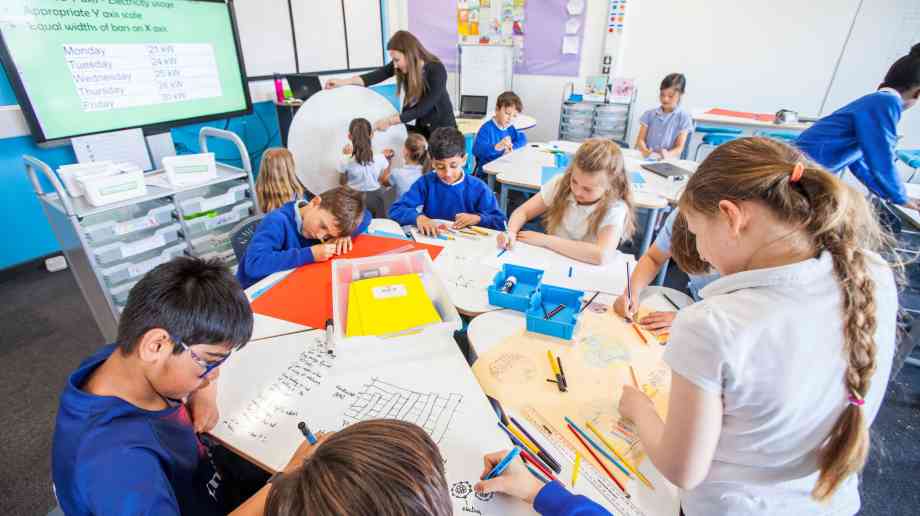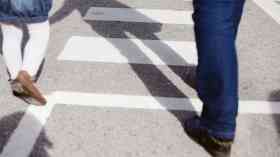
Rethinking classroom space
Trumpington Park Primary School took part in the Planning Learning Spaces in Practice pilot – an approach to learning space design which aligns physical learning environments with a school’s educational vision, whilst also supporting children’s personalised and independent learning. Headteacher Mel Shute shares her experience of the project
How does a school translate its educational vision into the design of its learning spaces? How do we ensure that learning spaces match the school’s ethos and enable the successful delivery of vision? Is it through pedagogy? Classroom layout? The choice of furniture, fixtures and equipment? All of these? And most importantly, would this ‘hands on’ approach to creating our own learning environment produce quantifiably improved learning outcomes?
At Trumpington Park Primary School we are passionate about exploring the potential of “learning by enquiry” – essentially giving children more freedom and responsibility to organise their own learning – and believe it could have a significant impact on improving learning outcomes. Three years ago, we were invited to take part in an international pilot of Planning Learning Spaces in Practice (PLSiP), an approach to learning space design which aligns physical learning environments with a school’s educational vision, whilst also supporting children’s personalised and independent learning.
A vision for learning
One advantage to a new school like ours, having opened in 2017, is not all classrooms are in use yet and so by joining the PLSiP pilot we had the opportunity to develop our learning spaces in alignment with that vision. A series of workshops covering pedagogy, curriculum experience, organisation of learning, leadership of learning and community engagement were held with the PLS team to define our ambition. From there, we were encouraged identify the practice, learning behaviours and activities we hoped to see in the new spaces, considered how they would overcome potential challenges (including constraints of current classrooms) and what this might look like in terms of design.
After analysing current and future practice ideas, the PLSIP team developed a design brief that considered the learning activities and different zones that would be required. We chose to work in a Year 4 classroom. It was intentionally zoned with specific areas to provide a variety of both independent and collaborative opportunities. We have a range of desk seating which the children choose from session to session. This includes triangular tables which can be easily moved to create different groupings or a space for independence. These have write-on and wipe-off surfaces for sharing strategies, knowledge and to try out ideas.
We have higher working desk areas for those who prefer to sit on a stool or stand at a desk space and again these can be organised to maximise collaboration. We have round tables for guided groups to work with an adult and a circular table which can flip into a shared whiteboard group thinking area. At the back of the class, we have a fake grass area with beanbags and many children like to utilise these when grappling with particularly complicated concepts or when brainstorming or researching. We also have a write-on wall surface for the children to collect key ideas, questions and vocabulary, which can then be shared with the whole class.
A flexible space
During the pilot, we could see that having a high level of flexibility around the organisation of a space had a huge impact on the way in which teaching and learning happens there. Pupils showed real thought about the areas of the classroom they choose to work in for different lessons which led to more concentrated focus, collaboration and independence. The children showed more ownership over their learning, having the freedom to select and use the varied resources and areas to improve their own learning as well as assisting the learning of others as appropriate. We wanted to embed the vision of children taking more ownership of their own learning, supporting each other and working together to strengthen understanding.
We also wanted to look at our own planning process for subjects like history and ensure that the children were taught high level knowledge and rich vocabulary but in a more child-inclusive fashion – therefore allowing chances for the enquiry and research to come from the children rather than the teacher. The space no longer restricts the variety of grouping methods, so a teacher is free to completely vary the structures in each lesson and focus on student engagement, ownership and focused learning.
Improved learning
Professor Peter Barrett, author of The Clever Classrooms report, monitored the PLSiP project to see how the learning outcomes of pupils were affected by this ‘hands on’ approach to creating their own learning environments. The key finding was that in comparison with the other classes, the children in the PLSiP classroom rapidly regained ground lost due to Covid and ended up ahead of where they were with age-adjusted assessments the previous year. The teachers in the PLSiP classroom, meanwhile, noted that there was improved concentration, increased independent learning, more engagement with curriculum content, more pupil dialogue and peer-to-peer learning.
Professor Barrett commented that the ability to independently choose groups led to reduced conflict, promoted further independent learning and children’s ownership within the process was more developed.
He noted that the write-on surfaces and shape of the tables allowed much more pupil dialogue and peer-to-peer learning talk, achieving the goal of changing the balance between teacher talk and pupil dialogue.
Professor Barrett also commented that the pupil-led lesson structure has meant more engagement with curriculum content. Children are enquiring into their own interest areas and asking thought-provoking questions.
He also noted that children are, at times, more able to provide help, support and challenge for each other, and that the furniture enables a much more flexible classroom and variety of teaching methods. As the tables move easily, no time is wasted reorganising spaces.
The pupils also had positive thoughts about their new learning spaces, feeling ‘more free’, and enjoying being able to work closely with peers and learning from each other. They appreciated the choice of different zones to work in and the variety of table and seating options.
Strategy for change
Trumpington Park is now moving into a ‘Strategy for Change’ phase where we will examine opportunities to embed the gains achieved through their engagement with PLSiP. This has included teaching pupils in this year’s Year 4 class to use the space within the first term of this academic year. We then plan to take the same principles into two other classrooms, slowly impacting more and more on Key Stage 2.
Elsewhere, we are working with the team on designing a purposeful space which will enable all those subject areas which are trickier to support in a class to be easily taught and accessed, such as areas of design technology, computing and robotics and art. We are in the process of designing a Maker Space studio area to encompass the key principles of our vision around students driving the learning process, working collaboratively to achieve a common goal, building resilience and problem-solving and taking the full ownership of gaining knowledge and applying this to further their learning.
We are on a journey, and this is not smooth, but from the children’s perspective this project has brought ownership and a sense of value to their own learning. It has impacted on their engagement, enjoyment and long-term memory. We have seen, once again, how pupil voice is an effective way to improve learning. We look forward to continuing this project, establishing this in other year groups, and involving more teachers.
Latest News
06/01/2026 - 10:24
London's universal free school meals programme has not led to improvements in pupil attainment during its first year, but has eased financial pressure and reduced stress for families.
05/01/2026 - 10:44
New regulations have come into force from today, banning adverts for unhealthy food and drinks before 9pm, and online at all times.
19/12/2025 - 09:54
The Education Committee has expanded its ongoing inquiry into the early years sector to examine how safeguarding can be strengthened in early years settings.
18/12/2025 - 09:25
The UK will be rejoining the Erasmus programme in 2027, following a package of agreements with the EU.
17/12/2025 - 09:31
Ofqual has fined exam board Pearson more than £2 million in total for serious breaches in three separate cases between 2019 and 2023 which collectively affected tens of thousands of students.







